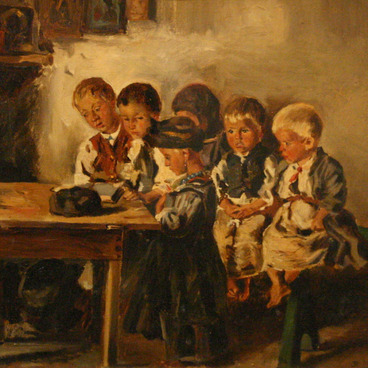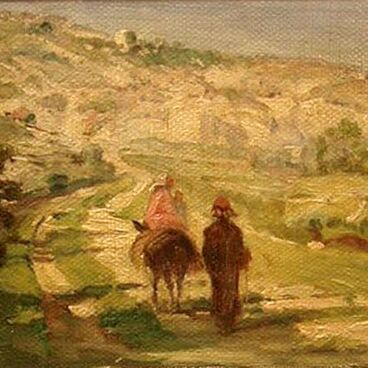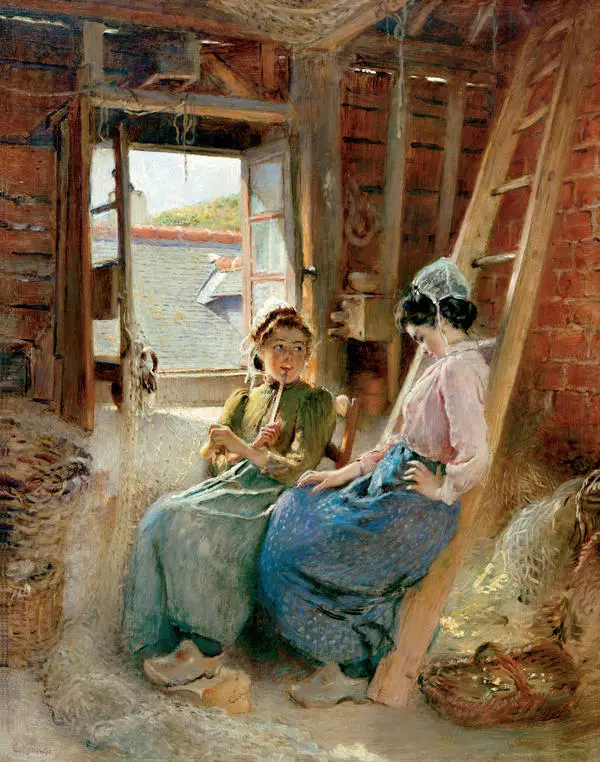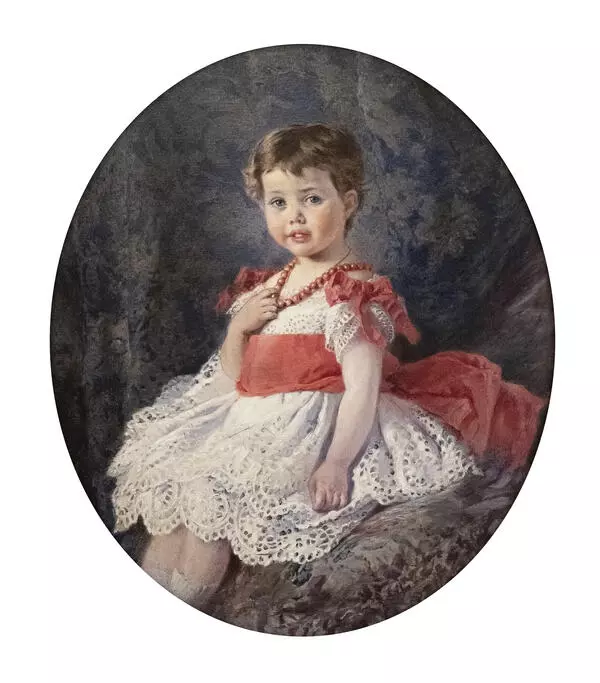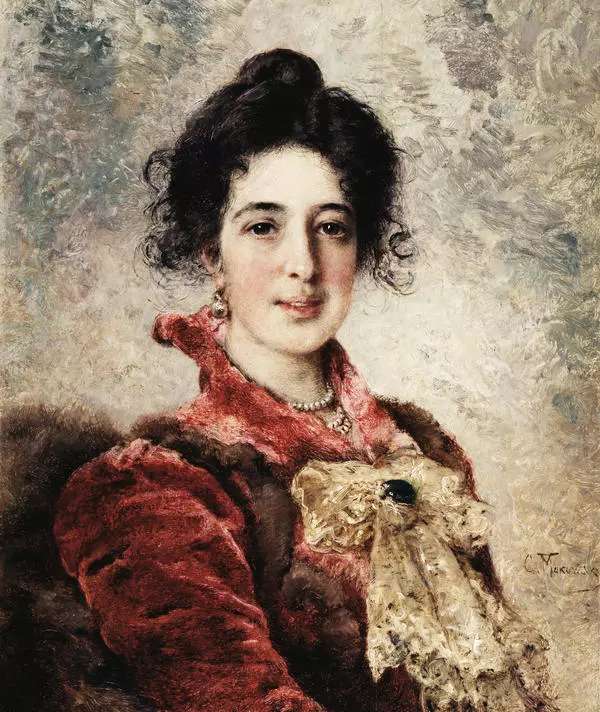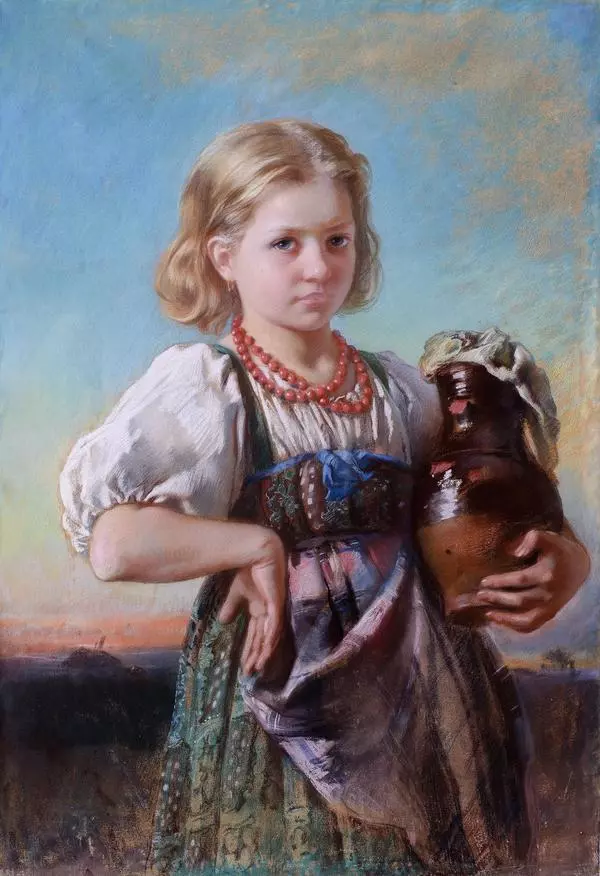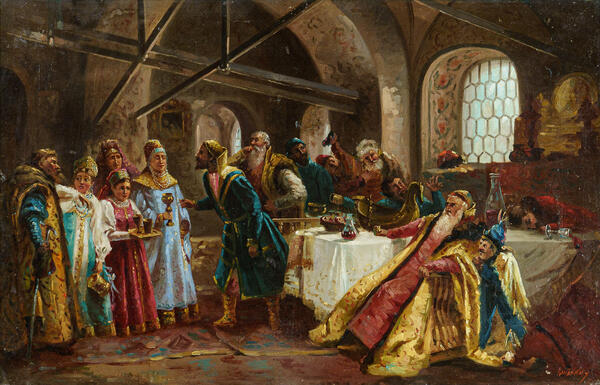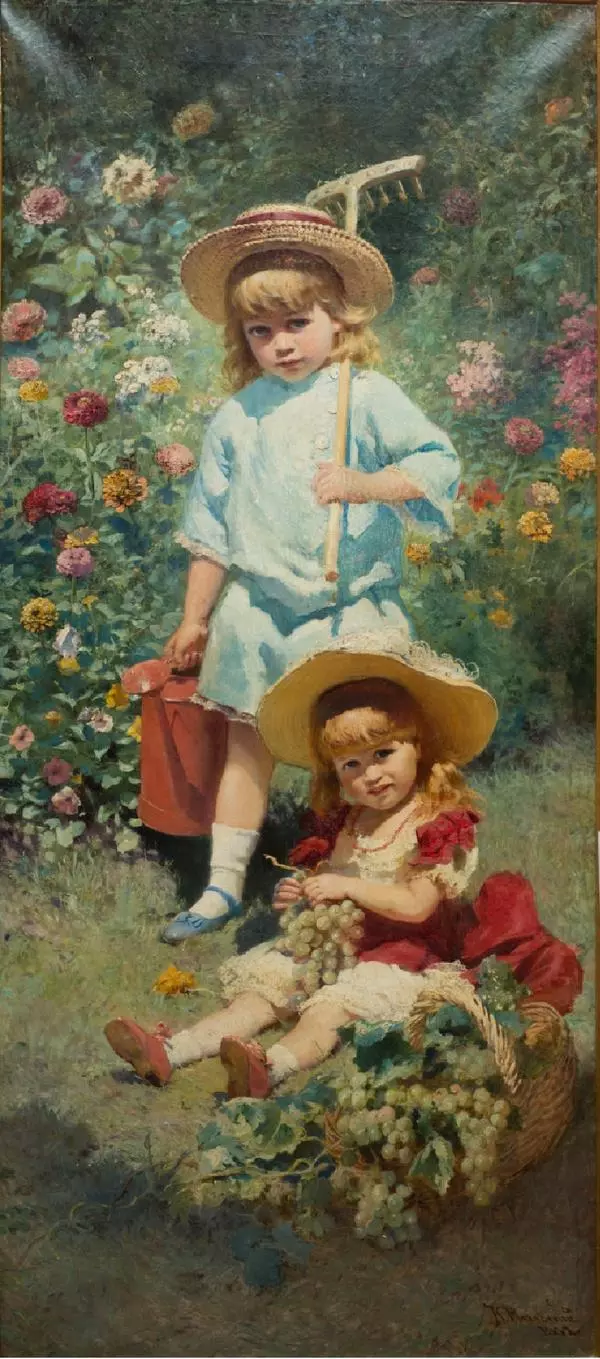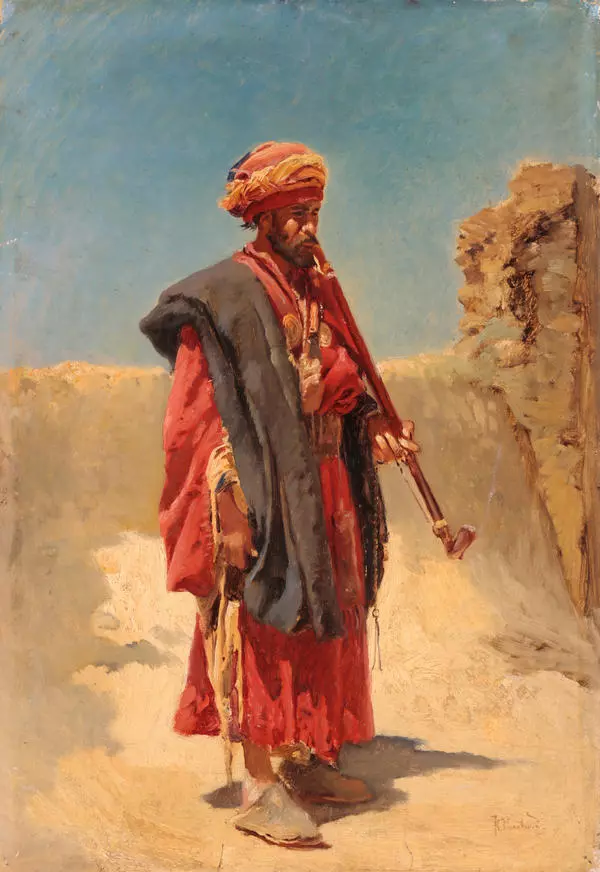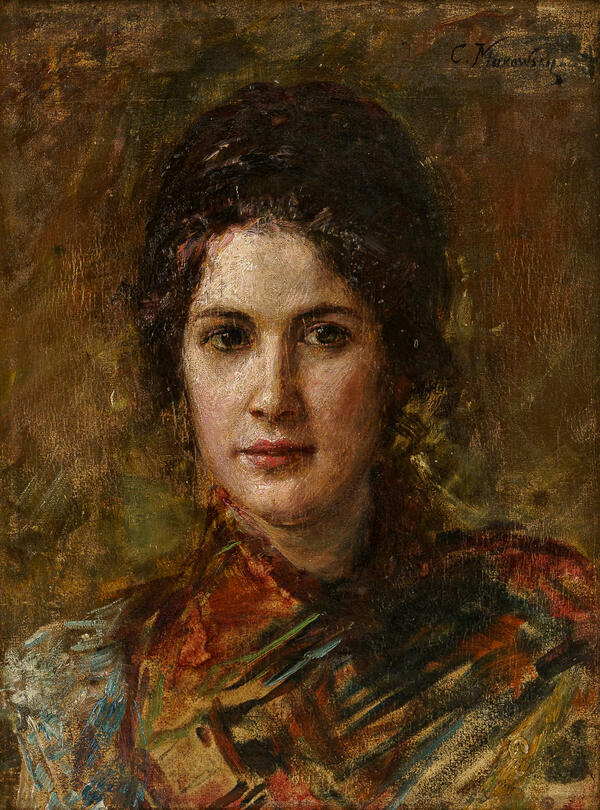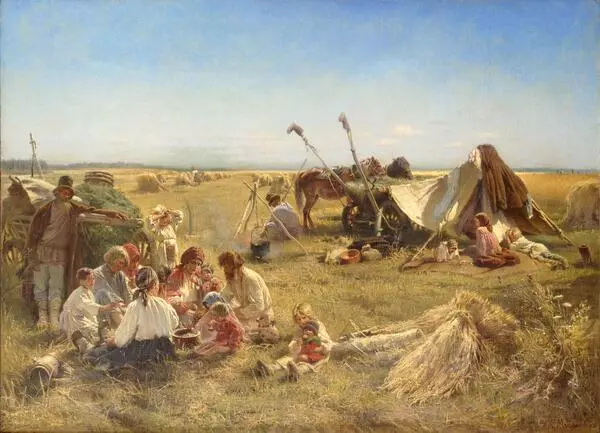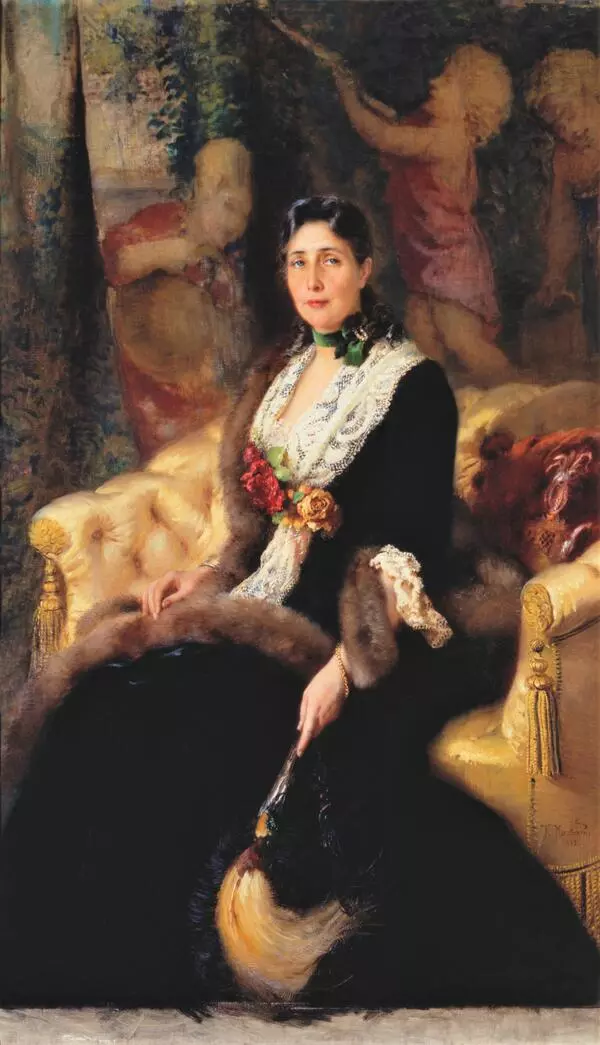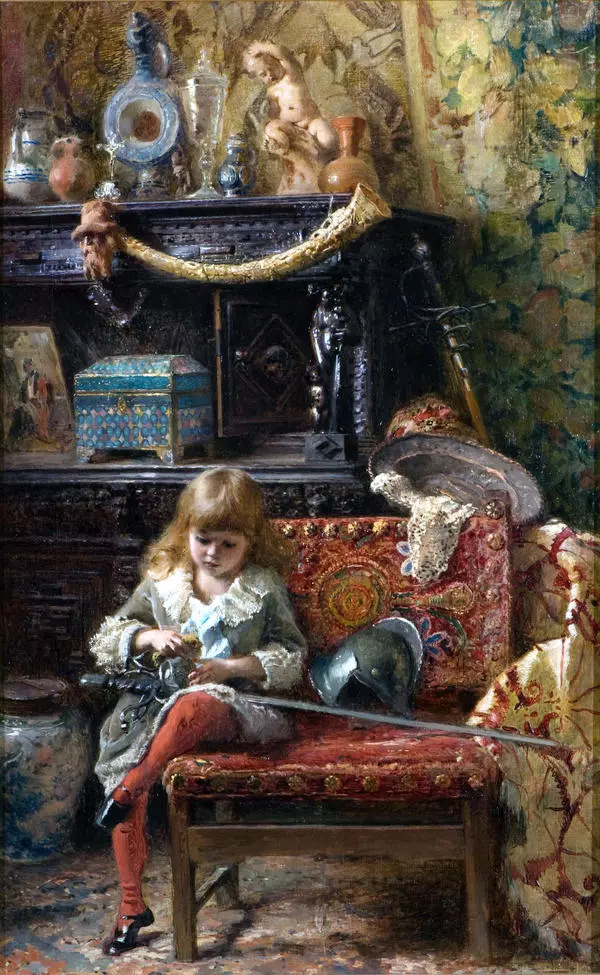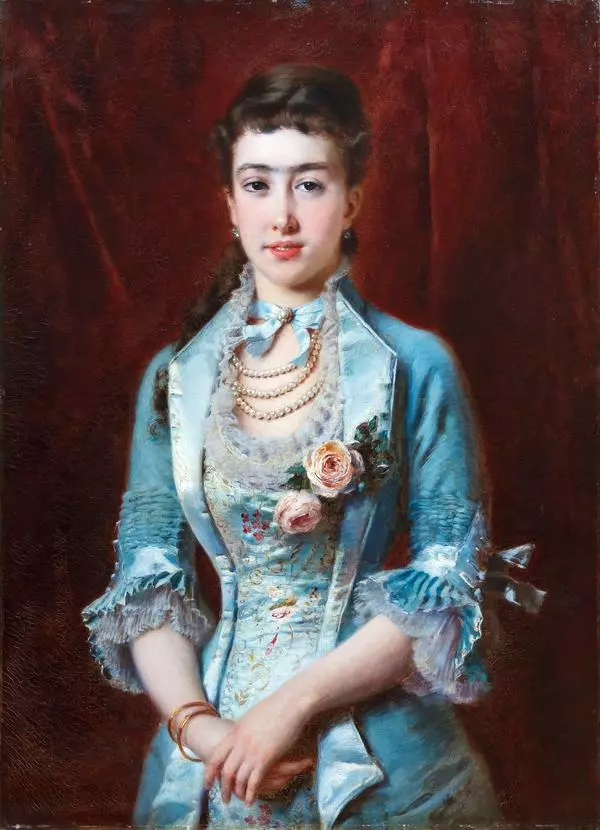Konstantin Yegorovich Makovsky (1839–1915) was born into the family of a Moscow official. His father, an amateur artist, was one of the founders of the “nature class, ” which later became the Moscow School of Painting and Sculpture. Makovsky’s mother was the daughter of a merchant of the third guild, a soprano singer.
At the age of 12, Konstantin entered the School of Painting and Sculpture. There his teachers were Apollon Nikolaevich Mokritsky, Mikhail Ivanovich Scotti, and Sergey Konstantinovich Zaryanko. These were famous portrait artists, students of Karl Pavlovich Bryullov, a painter of late Russian classicism.
After graduating from the educational institution, in 1858, Konstantin Egorovich entered the Moscow Academy of Arts. There Makovsky actively participated in annual academic exhibitions with history paintings. However, in 1863, he decided to take part in the “Revolt of the Fourteen” when a number of the best students of the St. Petersburg Imperial Academy of Arts refused to compete for the Grand Gold Medal.
Konstantin Makovsky continued his career in the St. Petersburg Artel of Artists under the leadership of Ivan Nikolaevich Kramskoy. In 1870, he became a member of the Society of Traveling Art Exhibitions. Here, the artist, along with his younger brothers Vladimir and Nikolai, presented his works, mainly genre art depicting life of ordinary people.
By the 1880s, Konstantin Yegorovich became interested in collecting antiques. He was inspired by the idea of reviving the atmosphere of Boyar Russia of the 17th century in his paintings. During this period, the master also created many images of “Russian beauties” in embroidered elegant sarafans and kokoshniks, decorated with beads and bright embroidery.
The paintings of the artist were bought both in Europe and in America. Most of his works have left Russia. Even Pavel Mikhailovich Tretyakov very rarely purchased Makovsky’s works for his gallery in Moscow, considering the prices too high.
“Portrait of Slezkina”
is a vivid example of a commissioned secular portrait. The artist managed to
create an image of a girl filled with charm and dignity. The painter
masterfully depicted a brocade dress with velvet sleeves and pearl jewelry. The
painting got into the Gorlovka Art Museum in 1961, but the identity of the
depicted girl was established only in 2018.

